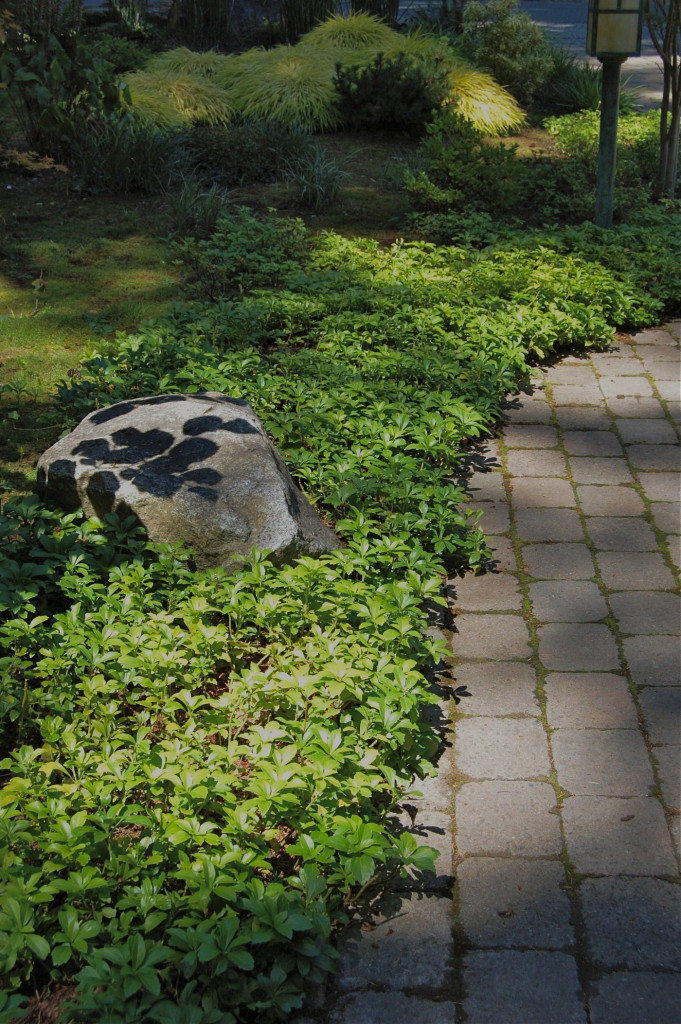Spring will come again but there’s no need to overlook your garden in the meantime.
If things are looking stark out there, adjusting the plant palette can turn blasé into beautiful. Adding evergreen plants is an easy way to create a lush-looking winter garden in the Maritime Pacific Northwest.
In past blogs, I’ve mentioned the importance of using evergreen shrubs to provide unifying structure when perennials are dormant and deciduous trees are bare.
This blog focuses on evergreen ground covers that make the whole garden look more vibrant, especially during wintertime.
Below are some of my favorite, easy-to-grow evergreen ground covers that will brighten up any garden.
Pachysandra terminalis sp. (Japanese Spurge) has glossy, apple green foliage that reflects light even on dark, overcast days. For best performance, plant it in rich, loose soil in dappled shade where it will get some supplemental water during summertime. A woodland environment is ideal. Once established, Pachysandra is vigorous – becoming a dense, fluffy carpet of green about 6″ high. Although not invasive, it spreads vigorously by underground roots and will quickly outgrow a small space. It can be contained by a border, but will decline if its roots have nowhere to go. Occasional shearing will promote new growth and keep Pachysandra from getting leggy.
Euonymus fortunei ‘Kewensis’ (Wintercreeper) has tiny, deep green leaves along vining stems that comprise a dense, twiggy plant. Wintercreeper thrives in average or better garden soil in a part sun location with afternoon shade. It will tolerate more sun if it gets ample water. Once established, occasional shearing will keep it looking tidy and encourage a low, dense habit. If left untrimmed, sprays of its vine-like stems may develop into unusual looking upward sweeping pointed waves that are sure to be a conversation piece.
Prunus laurustinus ‘Mount Vernon’ (Mount Vernon Laurel) has bright green narrow foliage about 4″ long. It is ideal for large areas and its stiff, pointed foliage has a bold texture that can provide excellent contrast with surrounding plantings. Although it can be grown as a small shrub, regular pruning and thinning keeps Mount Vernon laurel healthy and encourages lush new growth and good lateral coverage that forms a mat of undulating foliage about 12″ high. Like other laurel, it is not picky about soil and needs only minimal supplemental water once established.
When planting ground cover (with few exceptions) avoid dry, rocky and compacted soil unless it is adequately amended. Soil always reverts to it original form, so select plants that will thrive in the native soil if you want the best results for the least amount of work. Before planting near existing trees and plants, make sure their root mass will not be damaged by digging and that there is enough loose soil available for the ground cover to grow a healthy root system.
MORE IDEAS
Planning garden upgrades this winter is a great way to prepare for spring!
If you’re looking for more ideas, please contact me for a design consultation to learn about landscape design or how to maximize the impact of plantings for any spot in your garden.
